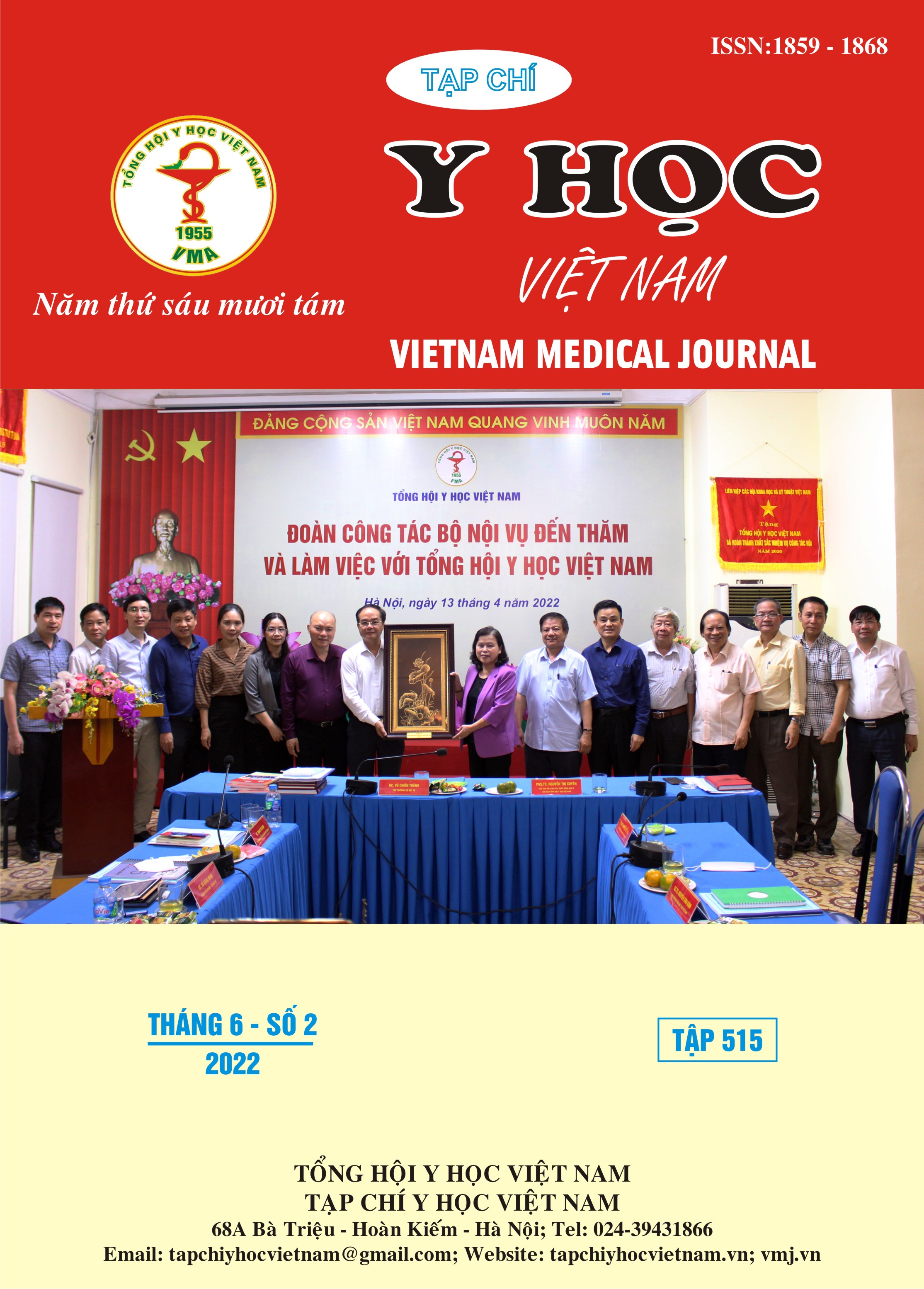CHARACTERISTICS OF VITAMIN D TESTING IN THE BLOOD OF PATIENTS WITH METABOLIC SYNDROME AT HANOI MEDICAL UNIVERSITY HOSPITAL
Main Article Content
Abstract
Objective: To describe the characteristics of vitamin D blood test in adult patients with metabolic syndrome at Hanoi Medical University Hospital. Methodology: A cross-sectional study with control was applied in 124 patients in the study group and 135 patients belonging to the control group. Results: There was a similarity in age and sex of the 2 study groups, there was a statistically significant difference between the 2 groups in terms of BMI, waist circumference, blood pressure, cholesterol, triglycerides, HDL, LDK, blood glucose, and HbA1c. The mean concentration of 25-hydroxyvitamin D in the study group was 21.7 ± 4.8 ng/ml, the 25-OH-D reduction threshold was 28.2, and the lower quartile is the median of the control group, the ratio 25-OH-D reduction rate in the study group was 84.7%, higher than the control group. There is a weak negative correlation between 25-OH-D concentration and waist circumference, BMI, cholesterol, triglycerides, HDL-C, SBP, HATTr, and HbA1c with statistical significance. Conclusion: There is an inverse correlation between plasma 25-hydroxyvitamin D concentration and waist circumference, BMI, total cholesterol, triglycerides, decrease in HDL-C, systolic blood pressure, diastolic blood pressure, and HbA1C.
Article Details
Keywords
25-hydroxyvitamin D plasma, metabolic syndrome
References
2. Kunii D, Hung NTK, Sakai T, Yamamoto S et al (2005), “The metabolic syndrome: prevalence and risk factors in the urban population of Ho Chi Minh City”, Diabetes research and clinical practice. 67 (3), pp. 243-250.
3. Binh TQ, Phuong PT, Nhung BT (2014), “Metabolic syndrome among a middleaged population in the Red River Delta region of Vietnam”, BMC endocrine disorders. 14 (1), pp. 77.
4. Nguyễn Thị Hường, Đoàn Phước Thuộc, Lê Văn Chi (2018), Giá trị của vòng bụng và tỷ vòng bụng/vòng mông trong tiên đoán hội chứng chuyển hóa của người dân tại hai xã của huyện Quảng Điền, tỉnh Thừa Thiên Huế, Tạp chí Y Dược học, tập 8, số 6, tr 27-33.
5. Assessment UENC for E. Insulin Resistance in Obesity. Published March 15, 2009. Accessed May 10, 2022. https://hero.epa.gov/ hero/index.cfm/ reference/details/reference_id/7416341
6. Szymczak-Pajor I, Śliwińska A (2019), “Analysis of Association between Vitamin D Deficiency and Insulin Resistance”, Nutrients. 11 (4), pp. 794.
7. Fu J, Han L, Zhao Y, Li G, Zhu Y, Li Y et al (2018), “Vitamin D levels are associated with metabolic syndrome in adolescents and young adults: The BCAMS study”, Clinical Nutrition. 38 (5), pp. 2161-2167.
8. Mitri J, Nelson J, Ruthazer R, Garganta C, Nathan DM, Hu FB et al (2014), “Plasma 25-hydroxyvitamin D and risk of metabolic syndrome: an ancillary analysis in the Diabetes Prevention Program”, European journal of clinical nutrition. 68 (3), pp. 376.
9. Gagnon C, Lu ZX, Magliano DJ, Dunstan DW, Shaw JE, Zimmet PZ et al (2012), “Low serum 25-hydroxyvitamin D is associated with increased risk of the development of the metabolic syndrome at five years: results from a national, population-based prospective study (The Australian Diabetes, Obesity and Lifestyle Study: AusDiab)”, The Journal of Clinical Endocrinology & Metabolism. 97 (6), pp. 1953-1961.
10. Lu Y, Liu M, Pei Y, Li J, Tian H, Cheng X et al (2015), “Low levels of serum 25-hydroxyvitamin D and risk of metabolic syndrome in China”, International journal of clinical and experimental medicine. 8 (8), pp. 13790.


